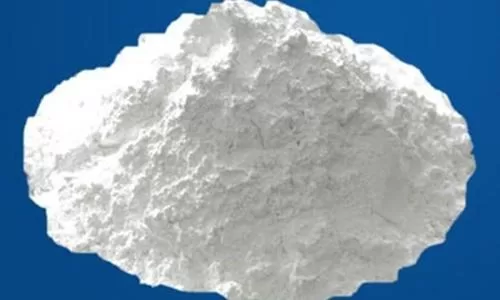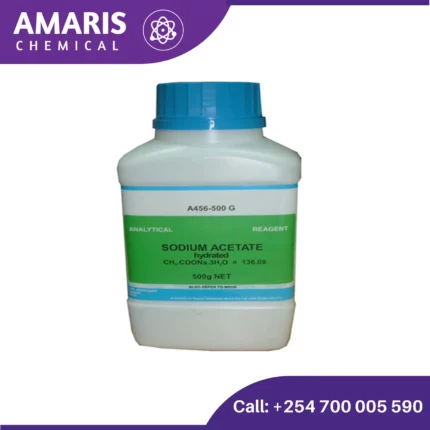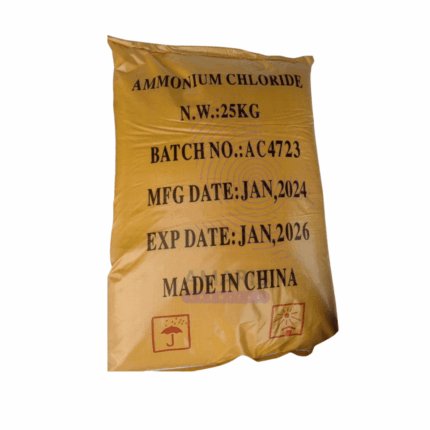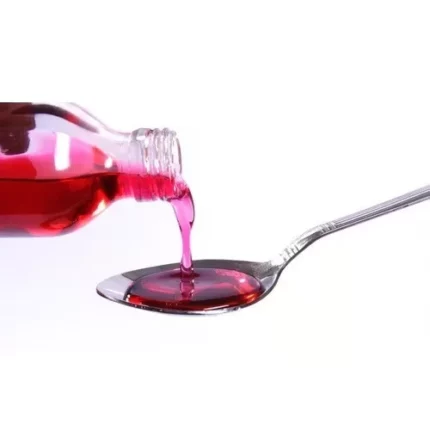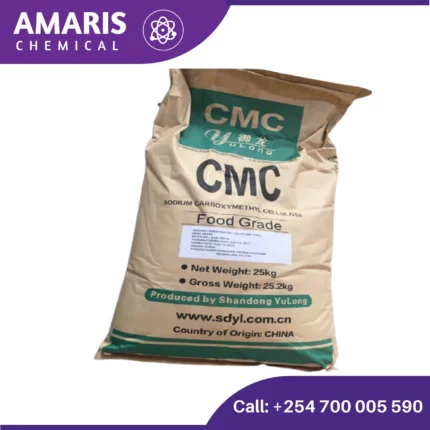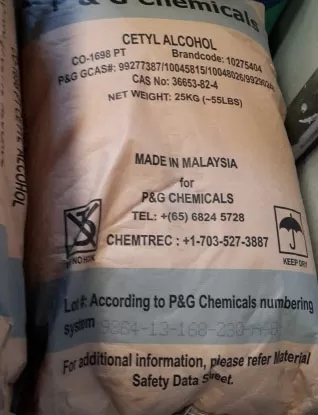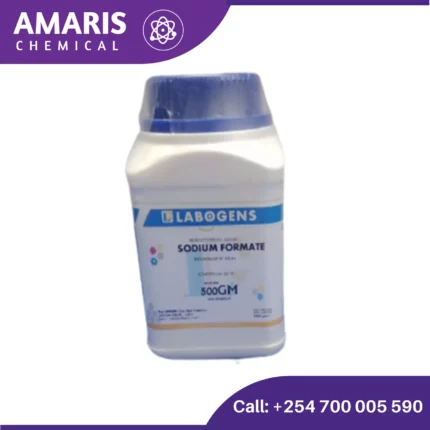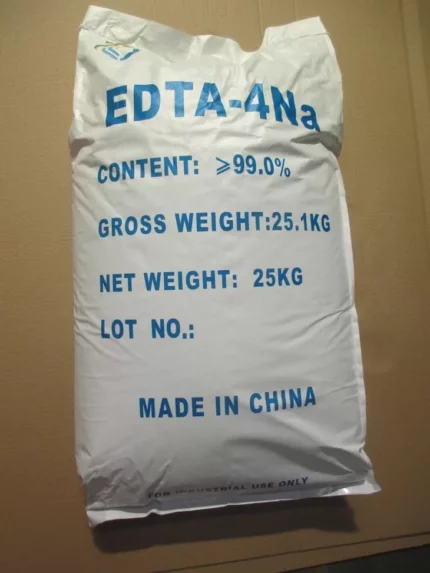“White oil 162kg” has been added to your cart. View cart
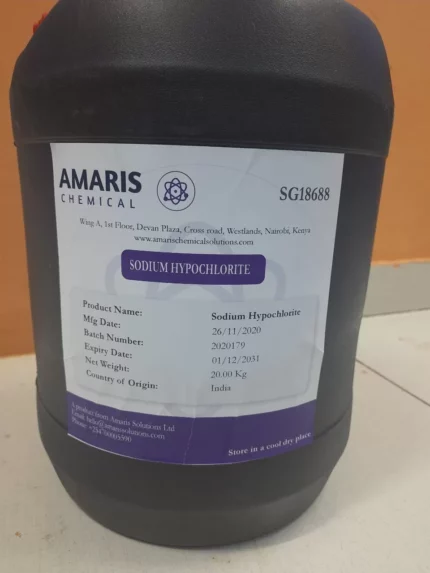
Sodium Hypochlorite 10-12% (Jik)
KSh5,500.00 Original price was: KSh5,500.00.KSh5,000.00Current price is: KSh5,000.00.
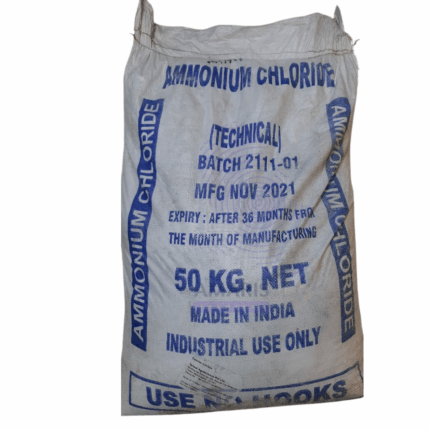
Ammonium chloride 50kg
KSh8,000.00 Original price was: KSh8,000.00.KSh7,800.00Current price is: KSh7,800.00.
Aluminium silicate
KSh9,500.00 Original price was: KSh9,500.00.KSh9,000.00Current price is: KSh9,000.00.
Aluminium silicate is a compound made up of aluminium, silicon, and oxygen, with the chemical formula Al2SiO5. It is also known as kaolin, a naturally occurring clay mineral that is widely used in a variety of industrial applications. Aluminium silicate is valued for its high temperature resistance, low thermal expansion, and good electrical insulation properties, which make it useful in the manufacturing of ceramics, refractory materials, and insulators. It can also be used as a filler in paper, paint, and plastics.
SKU:
ACS99317CHEM0
Categories: Excipients, Fillers and Reinforcements
Description
Aluminium silicate
- Ceramics and Refractory Materials: Aluminium silicate is widely used in the production of ceramics and refractory materials due to its high temperature resistance, low thermal expansion, and good mechanical properties. It is used to make high-quality porcelain, fine china, and other ceramics that are durable and have a smooth finish. In refractory materials, it is used as a component in firebrick, insulation, and castables.
- Paints, Coatings, and Pigments: Aluminium silicate is used as a filler and extender in paints, coatings, and pigments to improve their properties such as opacity, brightness, and resistance to wear and tear. It is also used as a flatting agent to reduce gloss in coatings.
- Plastics: Aluminium silicate is used as a filler in plastics to improve their mechanical properties such as stiffness, strength, and dimensional stability. It is also used as a flame retardant to reduce the flammability of plastics.
- Paper: Aluminium silicate is used as a filler in paper to increase its brightness, opacity, and printability. It also improves the paper’s surface smoothness and reduces ink absorption.
- Personal Care Products: Aluminium silicate is used as an ingredient in personal care products such as cosmetics, soaps, and toothpaste. It acts as a thickener, opacifying agent, and abrasive.
- Pharmaceuticals: Aluminium silicate is used as an inactive ingredient in some pharmaceuticals such as tablets and capsules. It is used as a diluent or filler to improve the flowability and compressibility of the active ingredient.
Overall, aluminium silicate has a wide range of industrial applications due to its unique properties and versatility.
Shipping & Delivery
Related products
AcetateSodium 500gm
Acidulants, Analytical Reagents, Excipients, Microbiology and Cell Culture Reagents, PH Adjusters, Preservatives
Sodium acetate is a compound with the chemical formula CH3COONa. It is often found as the trihydrate form, meaning it has three water molecules attached to the acetate ion. This compound is commonly used in various industries, including food production, where it serves as a preservative or acidity regulator. In chemistry, it's used in buffers and sometimes as a reagent. Sodium acetate is also utilized in heating pads for its ability to undergo a process called crystallization that releases heat when needed.
Ammonium chloride 50kg
Ammonium chloride is an inorganic compound with the chemical formula NH4Cl. It is a white crystalline salt that is highly soluble in water and has a salty taste. Ammonium chloride is often used in various industrial and laboratory applications, including as a flux in soldering, as a nitrogen source in fertilizers, and as a component in dry cell batteries. It can also be used in medicine as an expectorant to help thin and loosen mucus in the respiratory system
CarboxyMethyl Cellulose Food Grade (CMC)
Carboxymethyl cellulose (CMC) is a water-soluble polymer that is derived from cellulose, which is a naturally occurring polymer found in plant cell walls. CMC is produced by chemically modifying cellulose through the addition of carboxymethyl groups, which gives it its unique properties such as high water solubility, thickening ability, and film-forming properties.
CMC is widely used in a variety of industries, including food, pharmaceuticals, cosmetics, and textiles, as a thickener, binder, stabilizer, emulsifier, and dispersant. It is commonly found in food products such as ice cream, salad dressings, and baked goods as a thickener and emulsifier, as well as in cosmetics and personal care products such as toothpaste and shampoo as a binder and stabilizer.
Cetyl alcohol
Cetyl alcohol is a fatty alcohol with the chemical formula CH3(CH2)15OH. It is a waxy substance that is used in a variety of industries, including cosmetics, personal care products, and pharmaceuticals. Cetyl alcohol is commonly derived from vegetable oils such as coconut or palm oil, and is often used as an emulsifier, thickener, or lubricant in formulations such as lotions, creams, and ointments. It is also sometimes used as a surfactant, meaning it helps to dissolve other substances and improve their absorption.
Sodium acetate Trihydrate
Sodium Formate 500gm
I find sodium formate to be quite versatile. It’s a white, crystalline powder that’s often used in de-icing products and as a buffering agent. I appreciate its effectiveness in adjusting pH levels and its role in the leather tanning industry. Its water solubility makes it particularly useful in various industrial processes. Overall, I think it’s a valuable chemical with a wide range of applications.
Tetrasodium EDTA 25kg
Tetra sodium EDTA, also known as ethylenediaminetetraacetic acid tetrasodium salt, is a chemical compound commonly used in various industrial and commercial applications. It is a chelating agent, meaning it has the ability to bind and capture metal ions, thus preventing them from reacting with other substances or causing unwanted effects.
A concise definition of tetra sodium EDTA would be:
"Tetra sodium EDTA is a water-soluble salt derived from ethylenediaminetetraacetic acid, used as a chelating agent to bind and sequester metal ions, serving purposes such as metal complexation, stabilization, and preventing undesired chemical reactions."

